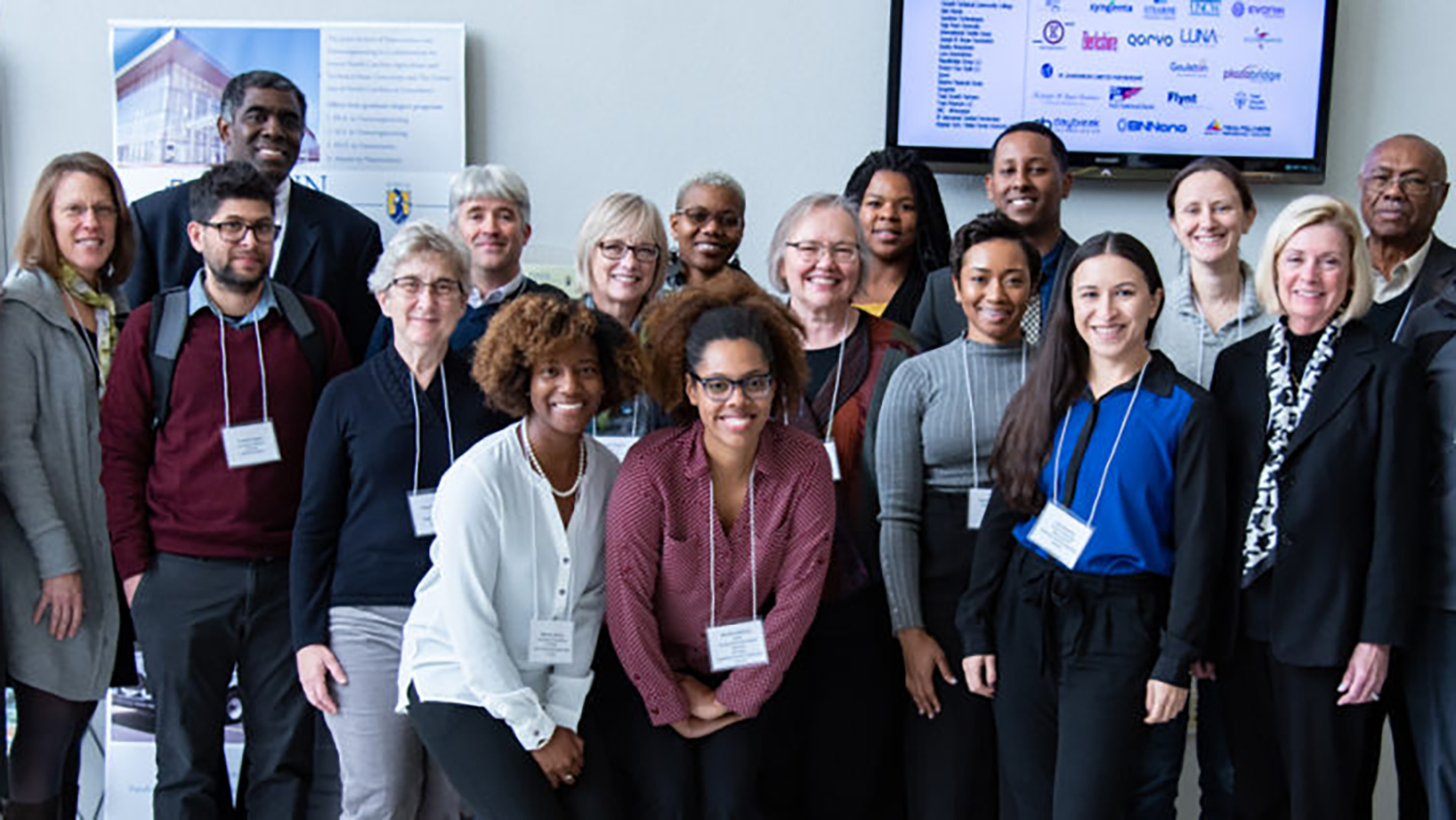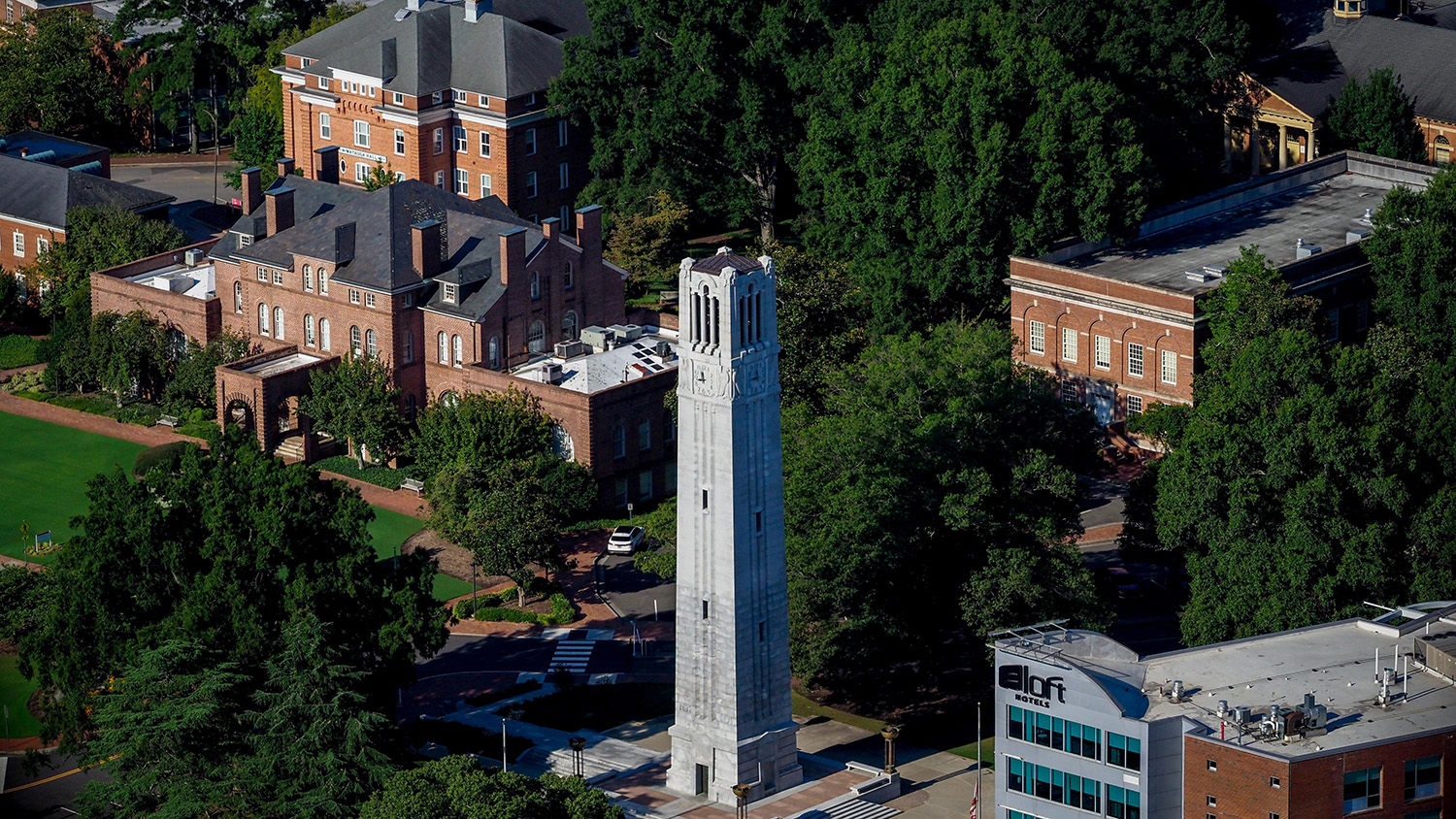Systemic Change in STEM Faculty

When Winser Alexander began his academic career in 1976 as associate professor and chair of the Department of Electrical Engineering at NC A&T, the underrepresentation of African Americans in academia was readily apparent. Alexander remembers attending conferences and being the only African American in the room. Through Alliances for Graduate Education and the Professoriate – North Carolina Alliance, he hopes to change this underrepresentation among STEM faculty.
AGEP-NC seeks to increase the number of underrepresented minorities (URM) in faculty positions. The three universities making up the AGEP-NC Alliance, NC State, NC A&T State University and UNC Charlotte, are working together to move toward this goal.
“This partnership seeks to identify issues that inhibit and/or discourage URM graduate students to pursue academic careers and obtain the support of department heads, directors of graduate programs and faculty in STEM departments at the universities participating in the AGEP-NC Alliance to make appropriate changes to encourage URM graduate students to successfully complete their Ph.D. programs and to pursue academic careers,” said Winser Alexander, a member of the AGEP-NC Senior Personnel and NC State professor emeritus in electrical and computer engineering.
Student Involvement
A corps of faculty fellows coordinates efforts with department heads and graduate directors to transform department culture and prepare URM dissertation students for faculty careers. Six doctoral students, two from each partner university, make up a Student Leadership Council that engages with senior leadership on the needs of students in their disciplines and campuses.
Members of the Student Leadership Council help come up with various strategies that can be implemented by faculty members who are a part of AGEP-NC Alliance. These strategies help enhance and strengthen the interactions and connections between faculty and URM graduate students.
“We, the SLC, also found commonalities among our institutions that could serve as areas of improvement for URM graduate student engagement and retention,” said Morika Williams, a former NC State member of the AGEP-NC Alliance Student Leadership Council. “These include increased financial support and assistance, research and professional writing assistance, and mentorship opportunities for URM graduate students.”
Williams is now a clinical fellow in the Division of Comparative Medicine at UNC-Chapel Hill. There, she studies the long-term effects of early life injury (i.e. newborns) on chronically painful diseases that occur during adulthood (i.e. osteoarthritis), using a translational rodent model to better understand what is occurring in humans. She credits her involvement in AGEP-NC Alliance with helping her transition into a career in academia.
“Dr. Gumpertz and other members of the AGEP-NC were very supportive of my academic pursuit into becoming an academician at a Tier-1 research institution,” said Williams. “They gave me advice on what to expect during the transition as well as expressed an active role in mentorship. Dr. Gumpertz even attended my Ph.D. defense in February, which was not only encouraging but showed me another level of personal support.”
Working Toward Solutions
“It is a common practice for current faculty in a department to participate in the selection of graduate students and the selection of future faculty from corresponding applicants,” said Alexander. “I feel that unconscious bias leads an individual to favor the selection of candidates whose ethnicity, background, country of origin, etc. is more closely related to their own. Thus, faculty members have a very significant influence on whether newly hired faculty members improve the diversity of the department.”
After a STEM student has been in a program for two years or more, the URM doctoral student attrition rate is nearly 50% with completion rates varying by discipline and ethnicity. In engineering, for example, the completion rate is 47% for African American students vs. 60% for white students. In math and physical sciences, the figures are 37% for black students vs. 52% for white students. Before there can be a more diverse faculty in STEM, there needs to be more support for URM graduate students.
Alexander was part of a group of faculty who worked with Marcia Gumpertz, professor in the Department of Statistics, to create the inter-institutional partnership that formed AGEP-NC, which is a key in providing the needed support for graduate students. Gumpertz, a former assistant vice provost for faculty diversity at NC State, wanted to carry on work from a previous National Science Foundation (NSF) grant promoting the success of women in faculty roles in STEM. The AGEP-NC Alliance received funding from the NSF in June 2018.
Alexander, Gumpertz and others knew that supporting URM students seeking to become university faculty would create a stronger academic environment. Promoting diversity would also benefit research and innovation in higher education.
“There’s so much talent out there that we’re missing out on, and our society can’t afford to bypass the contributions of URM students,” said Gumpertz. “That’s why we want to find ways to encourage the development of that talent through enhancing inclusion in doctoral programs.”
Faculty Fellows
Now, the first class of AGEP-NC Faculty Fellows (Brad Taylor, Applied Ecology; Reza Ghiladi, Chemistry; Melanie Simpson, Molecular and Structural Biochemistry; Prafulla Regmi, Poultry Science; and Eric Laber, Statistics) is completing their two-year term. Each fellow receives extensive training on cross-cultural and culturally responsive mentoring so they can better serve URM students and support the development of skills beneficial to faculty success. Fellows also engage in monthly reading and discussion groups to share knowledge and collaborate on mentorship and faculty development best practices. The project aims to share this knowledge with faculty colleagues and make changes to the processes and procedures in the Fellows’ departments.
“I got involved in AGEP-NC because we were not seeing URM students going into faculty positions,” said Keith Schimmel, a member of the AGEP-NC Senior Personnel and director of the applied science and technology Ph.D. program at NC A&T State University. “Through the program, I want to work toward developing an environment in which URM students feel supported in the pursuit of their goals and free to express concerns and questions, where they graduate and move into faculty positions.”
Diversifying the Pipeline
When students have the support they need, they are more likely to succeed. That’s especially true when they also see a representation of themselves in current faculty.
“Increasing diversity at the faculty level will help increase diversity at all other levels. Having a role model that a person can relate to from a racial perspective aids in building confidence in achieving one’s goal,” said Williams. “It would be amazing to see an equal number of women and men from various ethnic and racial backgrounds within the STEM fields. It would be a dream to live in a world where more majority faculty and students accepted the reality that white privilege exists and aids in certain luxuries that URM faculty and students do not have and likely will never have. And further, not only accept this reality but to advocate for URM individuals not as a feeling of obligation to satisfy a requirement, but as a personal desire of improving academia as a whole.”
Williams’ fellow former NC State Student Leadership Council representative echoes the importance of diversity and representation in encouraging the pursuit of academic careers.
“When you diversify the faculty pipeline, when you see people who look like you in the same spaces you are in, that encourages you,” said Whitney McCoy, a former NC State member of the AGEP-NC Alliance Student Leadership Council. “Through the support of my doctoral advisor [Jessica DeCuir-Gunby], a Black woman in academia, I was motivated to overcome obstacles and imposter syndrome to obtain my Ph.D. I knew that if she could be successful, then so could I. When you diversify academia, you make it better for everyone. That’s why it is so important to increase diversity in graduate schools by educating faculty on the recruitment, retention and mentorship of URM students.”
McCoy is now a postdoctoral research scholar at the University of Virginia’s Curry School of Education and Human Development, working on the Making Engineering Real project, which seeks to encourage increased representation in STEM settings by integrating digital technology into engineering education. She sees an opportunity for NC State to grow in providing resources for URM students and encouraging them to take the next steps in their academic careers.
She hopes that in the coming years, AGEP-NC will be able to grow and serve as a roadmap for incoming faculty so that they can be a resource for underrepresented students.
“I hope that these students are not just entering NC State, but they are graduating and going into the faculty,” said McCoy. “The more diversity and representation we have, the better we will be able to serve underrepresented students and encourage them to take the next step in their academic careers.”
Learn more about the mission, vision and work of AGEP-NC.
- Categories:


